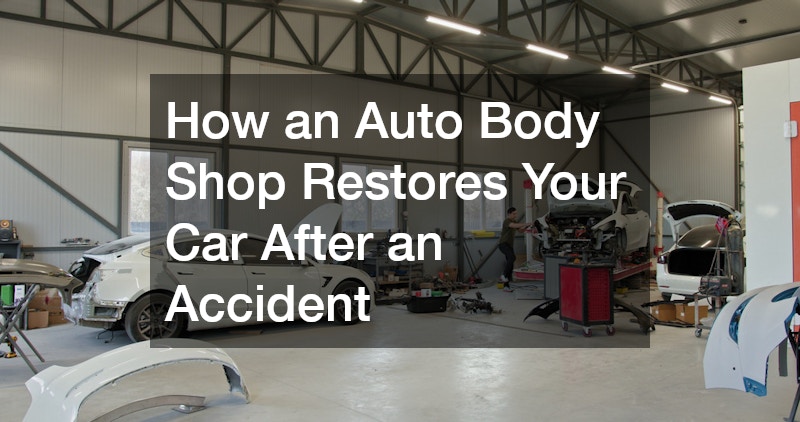
After an accident, your car may seem beyond repair, but professional auto body shops have the expertise to restore it to its pre-accident condition. They employ a range of techniques and procedures to ensure that your vehicle not only looks as good as new but is also safe and fully functional.
Once your vehicle arrives at the auto body shop, one of the first tasks is a comprehensive inspection and assessment. Technicians meticulously check for visible and hidden damages that could affect the vehicle’s safety and performance.
Video Source
This process is crucial as it helps identify all areas that require attention, ensuring that nothing is overlooked. Detailed notes and photographs are usually taken during this stage to document the extent of the damage. Based on this thorough inspection, a repair plan is developed to guide technicians through the complex restoration process. This plan outlines the necessary repairs and the timeframe required to complete each step.
Providing an accurate estimate of the repair costs is another critical early step. The auto body shop uses specialized software to calculate the cost of parts, labor, and materials needed for the restoration. Once the estimate is complete, it’s communicated to the vehicle owner and their insurance company if a claim is involved. Establishing a clear line of communication with insurance providers ensures that the repair process proceeds smoothly and that all parties are aligned. Given the potential for unexpected issues during repair, shops often maintain transparency and update the estimates as necessary. This openness helps build trust and ensures customers are not caught off guard by unforeseen expenses.
The structural integrity of a vehicle is paramount to its safety, and frame straightening and alignment are critical to achieving this. Advanced machinery, such as computerized measuring systems, is employed to align the frame to its original specifications. Frame alignment ensures that every part of the car is correctly positioned. A misaligned frame can lead to handling issues and increased tire wear, compromising the overall safety and performance of the vehicle. Technicians are trained to recognize and rectify distortions in the vehicle's structure, restoring it to its factory state. This meticulous attention to detail ensures the vehicle handles as intended once repairs are complete.
Damaged parts are identified during the inspection process, and replacement is vital to the car’s functionality and safety. Auto body shops aim to use Original Equipment Manufacturer (OEM) parts to match the vehicle’s specifications precisely. However, if OEM parts are unavailable, high-quality alternatives are considered. Technicians are skilled at determining the best options for replacing damaged components to maintain the vehicle’s integrity. Ensuring that every part fits and functions as it should is central to the repair strategy, and the correct parts are essential for a seamless restoration. Ultimately, part replacement contributes to restoring the car’s full operational capacity and appearance.
Achieving a flawless finish requires precise paint matching and skilled application techniques. Specialized color-matching technology helps technicians replicate the vehicle's original paint color, blending repairs invisibly with the existing coat. Once the paint color is matched, the application process begins, requiring careful attention to detail. Technicians apply primer, paint, and clear coat layers, ensuring a durable and aesthetically pleasing finish. The result is a seamless appearance that restores the car’s aesthetic appeal. This painstaking artistry ensures the vehicle looks as though it never suffered damage, maintaining its value and beauty.
After completing the structural and surface repairs, detailing is carried out to add the finishing touches. This stage involves cleaning, polishing, and ensuring all aspects of the vehicle meet the highest standards. A final inspection is conducted to verify that each repair job aligns with safety and aesthetic benchmarks. The attention to detail during this phase ensures complete customer satisfaction and the safe return of the vehicle to the road. The auto body shop aims to exceed customer expectations, ensuring the vehicle looks and performs as perfectly as it did before the accident. This commitment to excellence is what drives the best shops to deliver superior service.
An auto body shop plays a vital role in restoring a vehicle after an accident. From structural repairs to a perfect paint finish, they ensure the car is safe, functional, and aesthetically pleasing. The comprehensive process enables vehicle owners to regain their trust in their cars, knowing they have been restored to the highest standards.
